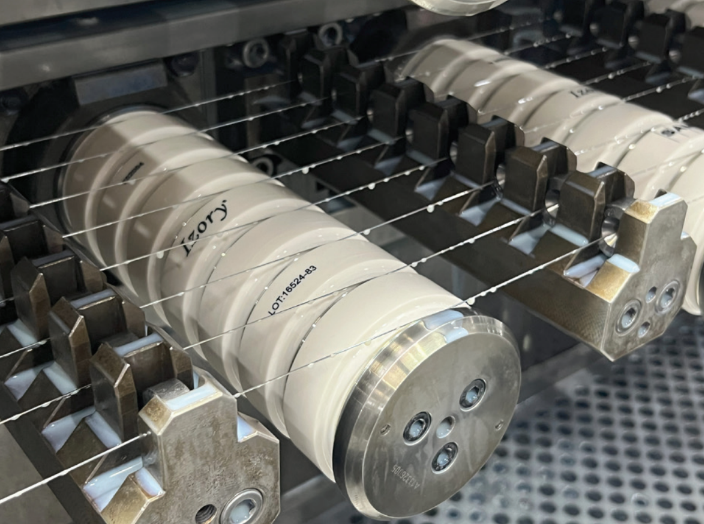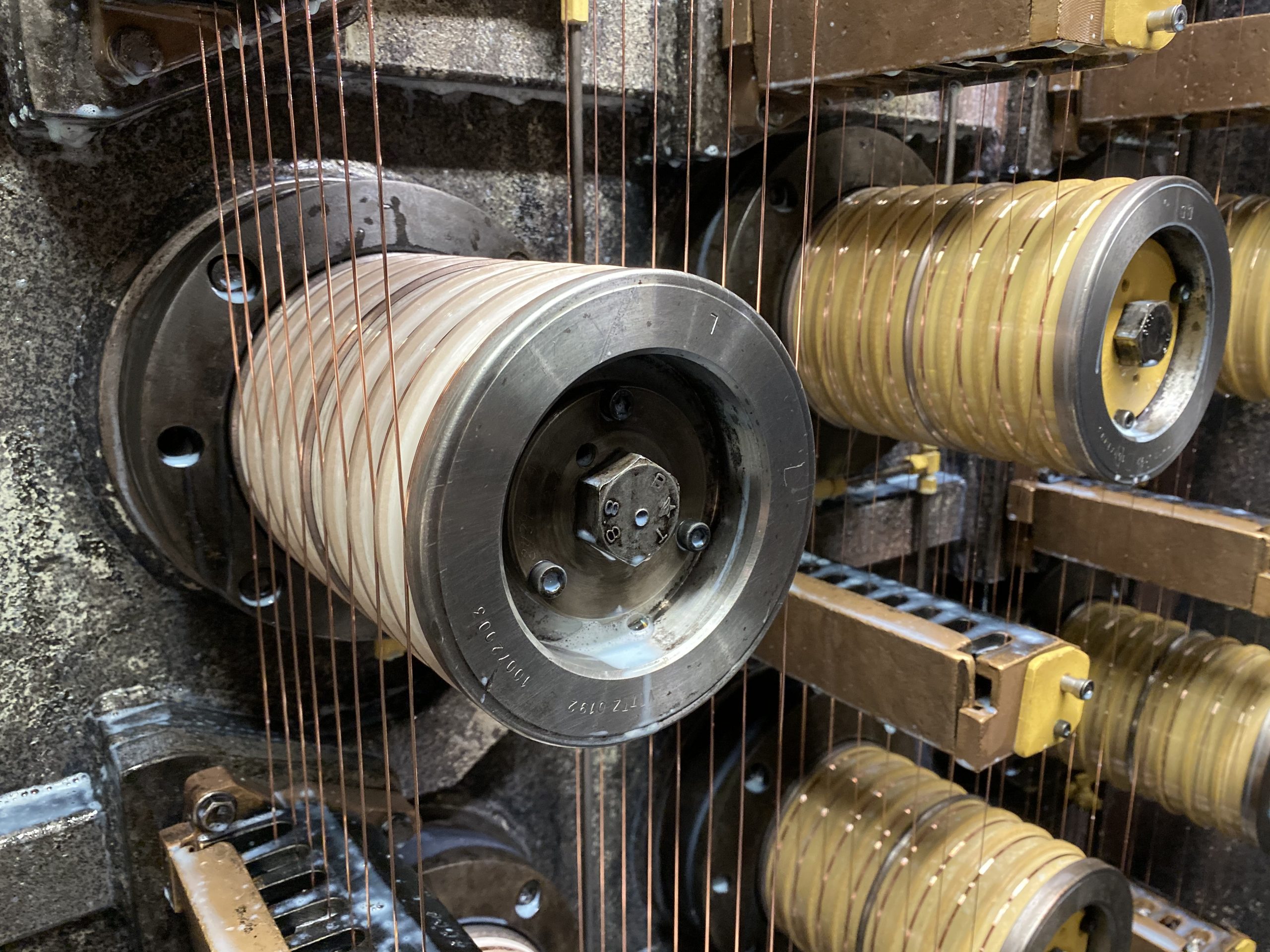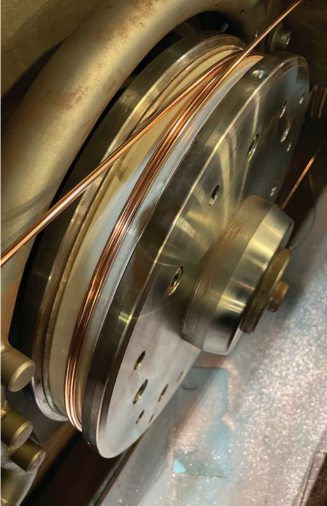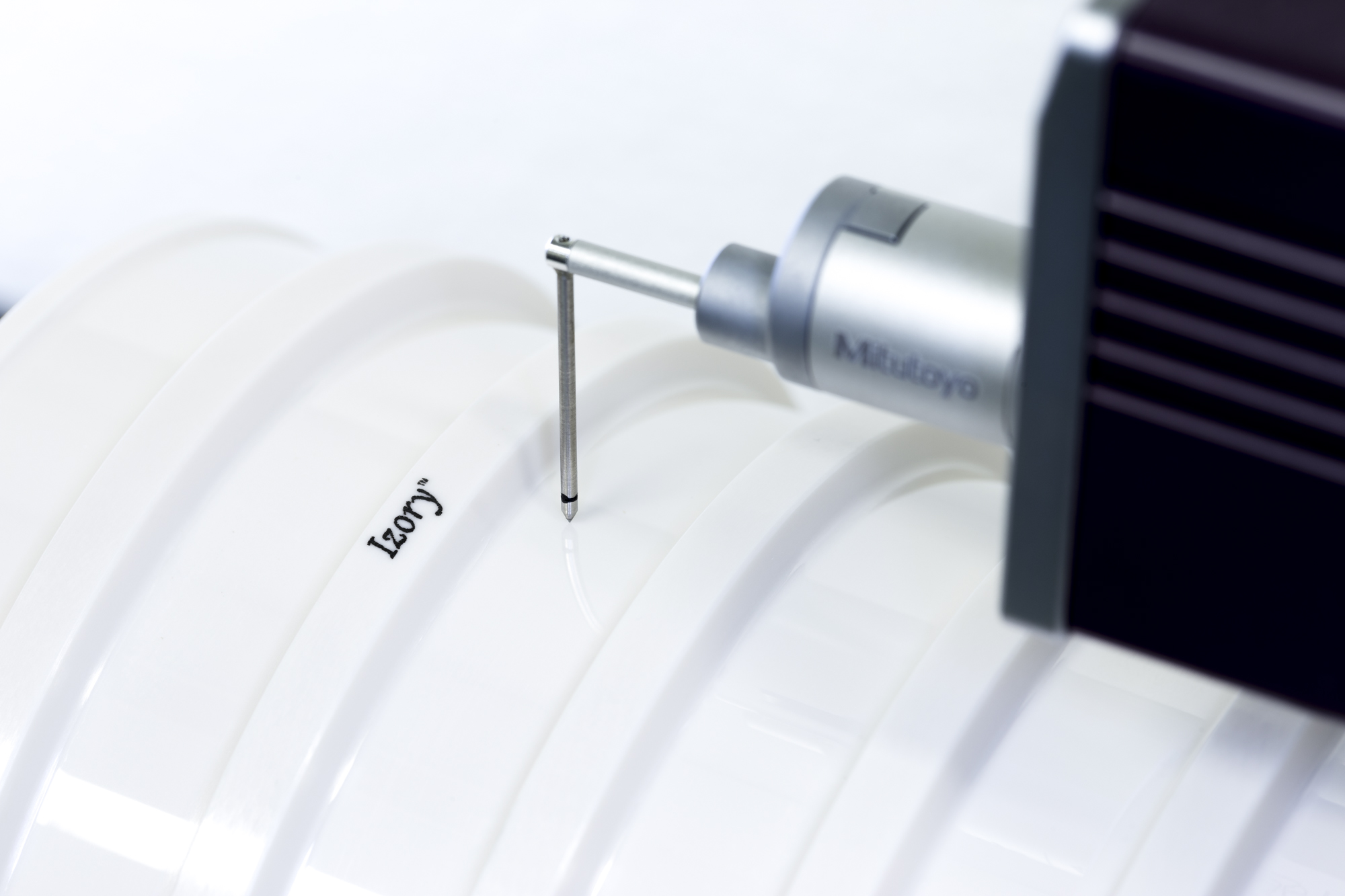This piece, authored by Refractron Vice President of Sales & Marketing Adam Osekoski, was selected for publication in the October, 2023 issue of ‘Wire Journal International.’
Drawing cones have an essential role in the wire drawing process, and companies should understand the impact—and potential results— from the different materials that can be used.
Have you benchmarked your cones for extending the time between maintenance cycles, or improving the throughput or reliability of your drawing lines? How about benchmarking for their impact on wire quality during the drawing process?
Drawing cones, which for the purposes of this article refers to any ring, roll or step-cone used on a wet drawing line of any size, are a critical part of a complex process that should be evaluated for their impact on wire quality and operational costs.
MgO partially stabilized zirconia (MgPSZ) has become the material of choice for wet drawing of nonferrous wire on most lines because of its longevity, durability in a rugged manufacturing environment and the smooth finish that can be obtained with polishing which helps preserve the quality of the wire during drawing.
Most new limited slip rod breakdown lines are specified with lower cost, carbide coated metal. I’ve seen early indicators that this is more about the cost of installing MgPSZ than performance but let’s leave that debate for another time and keep the focus of this article on choosing the best MgPSZ.
Basic Elements
Powder supply. Should you care if a supplier makes their own powder in house or if they purchase ready to press (RTP) powder? RTP powder is just that.
It is ready to pour into a press mold or die cavity. It is like going to a restaurant where the food is made elsewhere and warmed up on site. It can still taste good, but generally will not replace a chef making a meal for you from hand-selected, fresh ingredients.
Many suppliers buy RTP powder because they want to avoid the dusty, intensive process associated with making powder. That means you are getting a standard formulation that is manufactured in large lots for many applications versus being tailored.
A supplier that makes its own powder—meaning that they mix, heat treat, size and spray—will have better control of the process. The result will be a unique, fine-grained formulation that is stronger and has better wear resistance than other commercially available magnesia stabilized zirconia.
Does the color of a cone matter?
The short answer is no, it is just an indicator. However, since yellow zirconia (often called thermal zirconia) is made from a fusion process, it often contains higher levels of
impurities than chemical grade white zirconia. The yellow color in thermal zirconia comes from iron.
Impurities in thermal zirconia can make processing more challenging and can lead to more variation in the properties and material structure. These can adversely impact the key ceramic properties associated with wear resistance and the microstructure which during drawing can impact wire quality.
Think of a polished ring or roll with a “clean” microstructure like a smooth road for your wire to travel on that has fewer, and smaller potholes. Your car or wire in your case will benefit from the smooth road.
What should be considered?
Start by comparing the properties for different materials and suppliers. Hopefully, standardized material tests are published but even if they are, they often don’t identify the test method or the sampling method.
Most manufacturer’s data sheets include a statement that say the properties are typical, so dig deeper: Is the data representative of the best that is made or is it the average? How often are they measured? If they are destructive tests, how does the suppliers process them and ensure the samples reflect the cones that ship? Which ceramic properties are important?
Fracture toughness (Kic) is important since it allows for more aggressive grinding of MgPSZ and a lower delivered cost as compared to other zirconia, and because it provides resistance to chipping during handling or day-to-day operation in a wire
factory.
MgPSZ, which has often been called ceramic steel, has a Kic of ~10 MPam1/2 per ASTM C-1421, as compared to other ceramics found in wire manufacturing like alumina (2.9) and tungsten carbide (4.5). Strength, which should exceed 600 or even 700 MPa MOR per ASTM C-1161 for MgPSZ, is generally more than enough for a wire drawing cone.
Since fracture toughness and strength are typically “good enough” for any MgPSZ, focus on comparing hardness (typically 1150-1250 HV1 per ASTM C1327), density (closer to 5.84g/cc theoretical the better) and a wear or abrasion resistance test like ASTM G174 which measures material loss after rubbing since those properties indirectly impact performance.
Beyond Ceramic Properties
Top quality ceramic properties are important, but the key dimensions and the surface finish in the wire path also need to be accurate and precise. You will want to know if
these dimensions are measured, recorded and shared, what tools are used for the measurements and how often they are taken.
Will they be supplied with an inspection report for each cone? Are the cones laser-etched, with a lot number and serial number to tie everything together? Does the supplier include all dimensions that directly or indirectly impact how true an installed cone runs and the surface finish of the wire path? If it is assembled with a metal carrier, the ready-to-install cone should be externally balanced to mitigate stresses that can lead to wire breaks.
Testing
If time and resources allow it, a test is the ideal way to know which material works best in a unique and complex process like wire drawing. Since most manufacturers need to make products while bench-marking components, the ideal scenario is one that exposes multiple products to the same conditions at the same time. This can be a lengthy process, especially if repair cycles are measured in years, but even comparing products after a few months provides an early indicator that will help decision-making for a widespread change that mitigates risks.
Click image to enhance.
Other Elements
Service
Can a company respond to requests for technical assistance and quotes within 24 hours?Does it maintain a working inventory of standard parts?
Availability
“Support” means different things to different people, but face-to-face meetings remain the best way to understand the current state and to align expectations.
Will a supplier be able to do that? Can their staff present the elements to customers, collect the technical requirements, performance history and verify dimensions to establish a benchmark and ensure proper fit and function? Do their engineers have tools to take precise measurements on site or in their factory? Do they share their audits and drawings to align expectations?
Lead Times
These can stretch to 14-16 weeks, or longer, so is it possible to have blanket orders and stocking programs that can provide just-in-time delivery? What is the proximity
to your factory in the event of an urgent request?
Price
This comes last here, but everyone understands that this is often the first focus. That’s understandable, but the real question here should be the cost of ownership. Can a supplier explain what that is?
Refractron, which manufactures its proprietary MgPSZ formulation, Izory®HD (MgPSZ), for cones in its factory in Newark, New York, is prepared to discuss all elements of this article, and so should any supplier you consider.

How Can We Help You?
Contact Adam Osekoski, Vice President of Sales & Marketing at Refractron +1 315 573 1134, or at adamo@refractron.com to see if our featured material Izory®HD toughened zirconia and Refractron can help you extend maintenance cycles on your wire drawing lines, preserve wire quality, mitigate dusting and bolster your supply chain with responsive, reliable deliveries. Adam is a Ceramic Engineer with over 25 years experience designing, manufacturing and selling ceramics into critical applications like those found in factories manufacturing wire and cable.




